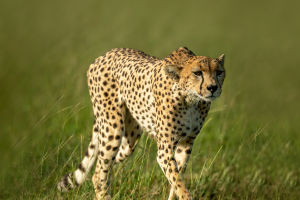Lykkers, have you ever wondered about the black rhinoceros, one of Africa’s most remarkable and endangered animals? Known for its distinctive hooked lip and fierce presence, the black rhino holds a crucial role in its ecosystem.
However, due to threats like poaching and habitat loss, these mighty creatures need our help to survive. Let’s dive into the life of the black rhinoceros and learn what makes them so special.
Physical Features and Differences
Black rhinos have a unique appearance, most notably their prehensile, or hooked, upper lip. Unlike the square-lipped white rhino, this hooked lip allows them to grasp twigs and leaves, perfectly adapted for browsing on bushes and trees.
Adult black rhinos typically weigh between 1,760 and 3,080 pounds, and despite their large size, they’re known to be quick and agile, capable of reaching speeds up to 35 miles per hour when charging.
Solitary and Territorial Behavior
Unlike some other large animals, black rhinos are solitary creatures. They establish and fiercely protect their territory, especially males, who may become aggressive toward intruders. A black rhino marks its territory using “middens,” or dung piles, which communicate their presence to other rhinos. This solitary behavior helps reduce competition for food, which is essential for survival in the dry habitats where they live.
A Diverse Diet
Black rhinos are browsers, meaning they feed mainly on leaves, twigs, and shrubs rather than grass. Their hooked lip is designed for grasping foliage, allowing them to feed on a wide range of plants, including thorny bushes. This diet helps maintain the diversity of African shrublands, as their feeding habits prevent overgrowth of specific plant species, keeping the ecosystem balanced and supporting other wildlife.
Threats and Conservation
Sadly, black rhinos are critically endangered due to poaching and habitat loss. Their horns, highly valued on the black market, have made them a target for poachers.
Conservation efforts have been underway for decades, focusing on anti-poaching laws, habitat protection, and relocating rhinos to safer reserves. These efforts have helped stabilize the population in some regions, but the black rhino still faces a long road to recovery.
Fun Facts About Black Rhinos
Did you know that black rhinos have poor eyesight but an excellent sense of smell and hearing? This helps them detect potential threats or food sources even when they can't see them clearly.
Another fun fact: black rhinos are known to wallow in mud, which protects their skin from the sun and keeps them cool. These incredible adaptations show how well-suited black rhinos are to their natural environment.
The black rhinoceros is a true survivor, embodying strength and resilience. However, their survival depends on ongoing conservation efforts and awareness.
Next time you hear about these magnificent creatures, remember the importance of preserving their place in the wild. Together, we can help protect the black rhino and ensure future generations experience their awe-inspiring presence!


